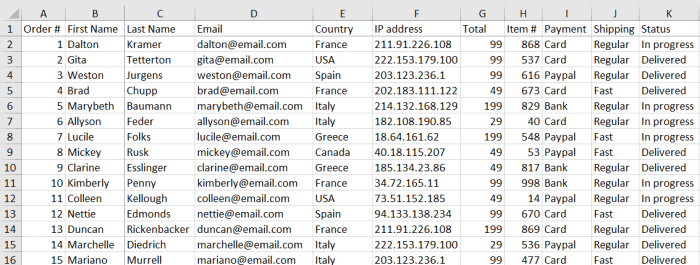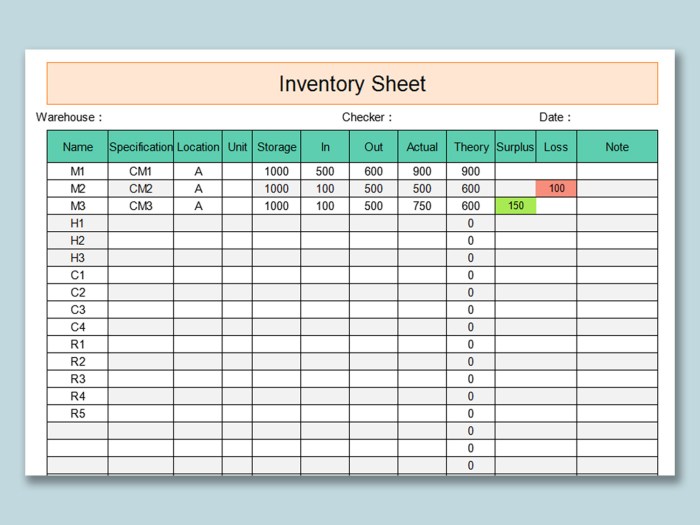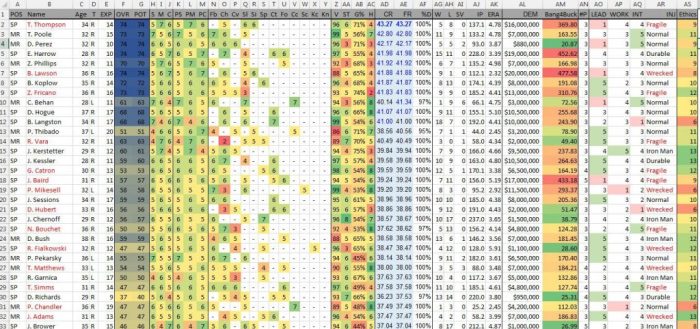A database is used instead of a spreadsheet when ________. – When managing and analyzing data, the choice between a spreadsheet and a database is crucial. While spreadsheets offer simplicity and ease of use, databases excel in handling large and complex datasets, ensuring data integrity, facilitating collaboration, and providing advanced analytical capabilities.
Understanding when to transition from spreadsheets to databases empowers organizations to unlock the full potential of their data.
This comprehensive guide explores the key factors that necessitate the use of a database over a spreadsheet, including data volume and complexity, data integrity and consistency, data sharing and collaboration, data analysis and reporting, scalability and performance, and security and compliance.
By delving into these aspects, organizations can make informed decisions about their data management strategies and harness the power of databases to drive better decision-making and achieve their business objectives.
Data Volume and Complexity
When managing large and complex datasets, spreadsheets can become cumbersome and prone to errors. Spreadsheets have limitations in handling data relationships and dependencies, making it difficult to maintain data integrity. Databases, on the other hand, are designed to handle large volumes of data efficiently and enforce data integrity through constraints and data validation rules.
Examples of scenarios where a database is more suitable than a spreadsheet due to data volume and complexity:, A database is used instead of a spreadsheet when ________.
- Managing customer data with millions of records, including personal information, purchase history, and preferences.
- Tracking inventory levels for a large retail chain with thousands of products and multiple warehouses.
- Storing financial data for a global corporation with complex transactions and multiple currencies.
Data Integrity and Consistency
Data integrity and consistency are crucial for accurate decision-making. Spreadsheets can be prone to errors and inconsistencies due to manual data entry, formula errors, and lack of data validation. Databases enforce data integrity through constraints, such as data types, unique keys, and foreign key relationships.
They also provide data validation rules to ensure that data entered meets specific criteria.
Data Sharing and Collaboration: A Database Is Used Instead Of A Spreadsheet When ________.

Spreadsheets have limited capabilities for sharing and collaborating on data. Multiple users can access the same spreadsheet, but it can lead to conflicts and data inconsistencies. Databases facilitate data sharing and collaboration among multiple users by providing access control and version control.
This ensures that users have the appropriate level of access to data and that changes are tracked and managed effectively.
Examples of how databases support version control and access control:
- A database can track changes made to data over time, allowing users to revert to previous versions if necessary.
- Databases can assign different levels of access to different users, ensuring that only authorized users can view, edit, or delete data.
Data Analysis and Reporting

Spreadsheets have limited capabilities for advanced data analysis and reporting. They can perform basic calculations and create simple charts, but they are not suitable for complex data analysis, such as data mining and statistical analysis. Databases provide powerful data analysis tools, such as SQL queries, data mining algorithms, and statistical functions.
They also enable the creation of dynamic reports and dashboards that can be customized to meet specific reporting needs.
Scalability and Performance

As data grows, spreadsheets can become slow and inefficient. They are not designed to handle large volumes of data and can experience performance issues when processing complex queries. Databases are designed to handle large volumes of data efficiently through indexing and query optimization.
They can scale up to accommodate growing data volumes without compromising performance.
Security and Compliance

Spreadsheets can pose security risks, as they are not designed to protect sensitive data. They can be easily accessed and modified by unauthorized users, leading to data breaches or data loss. Databases provide robust security features, such as encryption, access control, and audit trails.
They also help organizations meet regulatory compliance requirements, such as GDPR and HIPAA, by ensuring the confidentiality, integrity, and availability of data.
Essential Questionnaire
What are the key differences between spreadsheets and databases?
Spreadsheets are suitable for small, unstructured datasets and basic calculations, while databases are designed to handle large, complex datasets, enforce data integrity, and facilitate collaboration.
When should I consider using a database instead of a spreadsheet?
Consider using a database when your dataset exceeds the capacity of a spreadsheet, requires complex data relationships, or demands high levels of data integrity and security.
What are the benefits of using a database over a spreadsheet?
Databases offer advantages in data integrity, collaboration, scalability, performance, and security, making them the preferred choice for managing large and complex datasets.